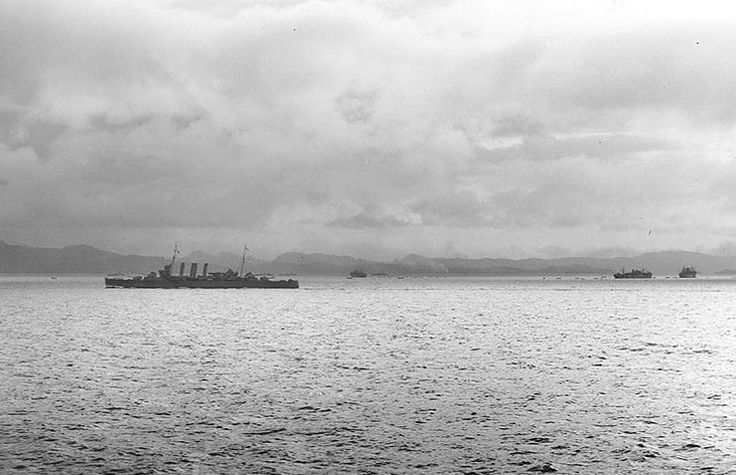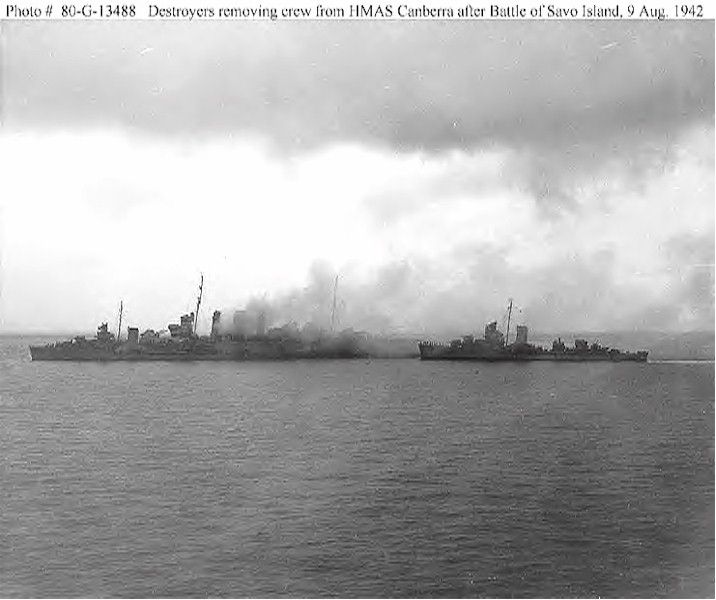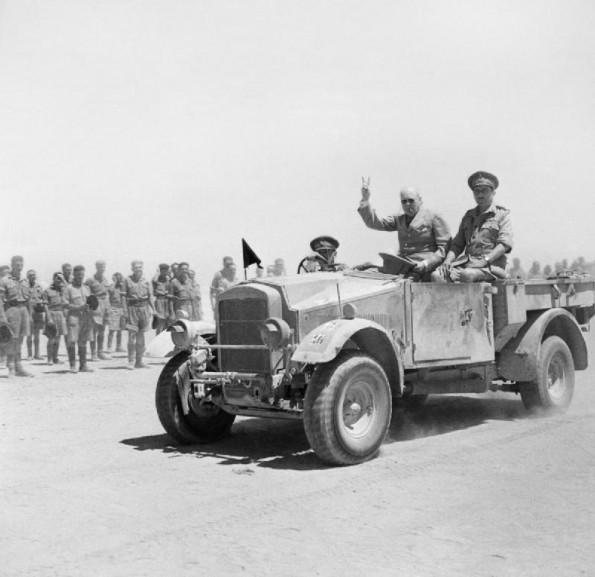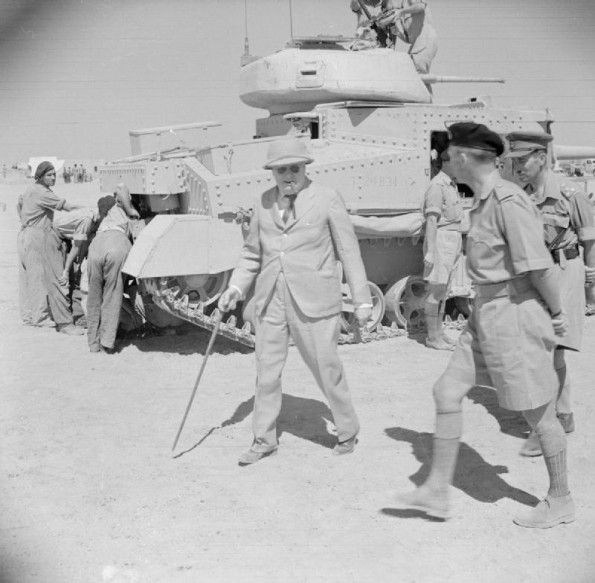Air Operations, CBI
4 11th Medium Bomb Squadron B-25s and 3 23rd Fighter Group P-40s based at Kweilin and Hengyang stage through Nanning attack port facilities at Haiphong, Indochina. A freighter is sunk in the attack.
[Air Operations, Bismarcks
5th Air Force B-17s attack Japanese Navy airfields at Rabaul and Gasmata, New Britain.
[Air Operations, Europe
BOMBER COMMANDDaylight Ops:
- 3 Mosquitos to Germany; 1 bombs at Frankfurt
- No losses
- 192 aircraft to Osnabrück: 91 Wellingtons; 42 Lancasters; 40 Stirlings; 19 Halifaxes
- Visibility good, but initial flares scattered over wide area; ground reports: 206 houses and 1 military installation destroyed, 4,000 others light damage; industrial damage include a vehicle works, a gas meter factory, a textile factory and an iron foundry; 62 people killed, 107 injured
- First effective jamming of Gee signals achieved by Germans this night; in mid-flight, RAF pilots find their 'Gee' radar jammed. It appears that the Germans have sited jamming equipment all over Europe, including one in Paris on the Eiffel Tower, and now the British have to work fast to develop their new bombing aid 'Oboe'.
- 3 Halifaxes and 3 Wellingtons lost
- 18 planes to Le Havre, 13 Blenheim Intruders, 3 aircraft lay mines in the Frisians
- No losses
Air Operations, New Guinea
5th Air Force B-17s attack Salamaua.
[Air Operations, Solomons
On its way back to New Caledonia alone, the US Navy destroyer Jarvis, damaged by a torpedo the previous day off Guadalcanal, is attacked by 16 G4M 'Betty' bombers out of Rabaul. The ship is hit by several torpedos. 2 'Bettys' are brought down by the ship's guns, but the Jarvis sinks with all hands including a downed VF-5 F4F pilot rescued by the ship on the 7th.
[Battle of Savo Island
On learning of the American landings in the Solomons, the Japanese send a squdron from Rabaul on the night of August 8. This force consists of 5 heavy cruisers: Chokai, Aoba, Kako, Kinugasa and Furutaka; 2 light cruisers: Tenryu and Yubari; and the destroyer Yunagi. With Vice-Adm Gunichi Mikawa in command they are to take the Allied fleet protecting the transports for the Solomons landing by surprise off Savo Island.
The Allies squadron, commanded by Australian Adm Victor A. C. Crutchley, is composed of 6 heavy cruisers: Chicago (CA-29), Astoria (CA-34), Quincy (CA-39), Vincennes (CA-44), the Australian ships Australia and Canberra; 2 light cruisers: San Juan (CVL-30) and the Australian Hobart; and 8 destroyers.
Just after midnight the Japanese force enters Sealark Channel, later renamed Ironbottom Sound. During a hard-fought, two hour one-sided night battle at which the Japanese are better trained and equipped, the heavy cruisers Astoria, Quincy, Vincennes and Canberra are sunk and the heavy cruiser Chicago and 2 destroyers, the Ralph Talbot (DD-390) and the Patterson (DD-392), are severely damaged. The Japanese get away almost unharmed; the cruisers Kinugasa, Chokai and Aoba are slightly damaged, and they have 58 dead and 53 wounded. The Allied losses are 1,023 dead and 709 wounded.[MORE]
|
|
Battle of the Atlantic
Just before midnight on the 8th two U-boats are spotted near Convoy SC-94. The British corvette HMS Dianthus opens fire forcing the U-boats to dive. A depth-charge attack blows the one of the submarines, U-379, to the surface. Dianthus opens fire with all available guns and then rams the U-boat no less than four times before she sinks. Dianthus is badly damaged and takes up position as one of the convoy.
| Class | Type VIIC |
| CO | Kapitänleutnant Paul Hugo Kettner |
| Location | North Atlantic |
| Cause | Ramming |
| Casualties | 36 |
| Survivors | 5 |
Eastern Front
From Army Group A, 1st Panzer Army captures Maykop and 17th Army, Krasnodar in the Caucasus. The oil installations at Maykop have been demolished however. Soviet resistance, favored by the terrain, takes on a new strength in the foothills of the mountains.
SOUTHERN SECTORThe 24th and 16th Panzer Divisions meet behind the 62nd Army cutting off 8 divisions and elements of the 1st Tank Army. Fighting inside the pocket is intense as the 6th Army immediately begins the destruction of the encircled units. The 1st Guards Army throws 3 divisions into an attack to relieve the trapped force.
SOVIET COMMANDThe Stavka subordinates the Stalingrad Front to Eremenko's Southeast front. Gordov becomes deputy commander of the Stalingrad Front as Eremenko takes senior command. Golikov becomes deputy for the Southeast Front. Moskalenko is given command of the newly forming 1st Guards Army. To asses the deteriorating situation in the south, Stalin orders Zhukov to join Vasilevsky.
[India, Home Front
Mahatma Gandhi and all members of the Congress Working Committee are arrested for leading the Civil Disobedience Campaign. This sparks widespread outbreaks of sabotage and bloody riots in Bombay and 6 other cities. 721 people are killed, 1,219 are injured.
[New Guinea
The Australian Gen Sydney F. Rowell takes over command of Allied forces in New Guinea.
[
|
|
Solomons
After their heavy defeat in the night battle, the Americans hastily withdraw their amphibious and air support groups, taking with them about 2,000 men and more than half the supplies for 60 days for the landing force. The 17,000 Marines already landed, 10,900 troops on Guadalcanal and 6,075 on Tulagi, are left to fend for themselves on the various islands. To support the infantry, 3 field artillery battalions, plus special weapons, tanks, tank destroyers and part of the 3rd Defense Battalion have landed on Guadalcanal, while the 3rd Battalion, 10th Marines, with 75-mm pack howitzers and part of 3rd Defense Battalion have landed on Tulagi. The Marines on Guadalcanal consolidate their bridgehead and get to work to complete the runway on the airfield. Other parties occupy the small islands of Mbangai, Kokomtambu and Makambo.
[


